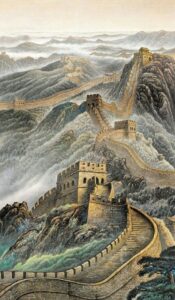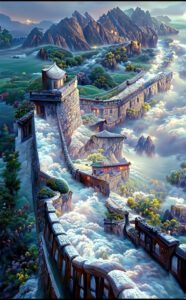The Great Wall of China stands as one of the most iconic and impressive architectural feats in human history. It is a series of fortifications that span across the historical northern borders of China, stretching approximately 13,170 miles (21,196 kilometers) in total length, including walls, trenches, and natural barriers. The construction of the Great Wall began as early as the 7th century BC and continued for centuries, with various dynasties adding to and reinforcing its structure. Its primary purpose was to serve as a defensive barrier against invasions from nomadic tribes and other potential threats from the north.

The Great Wall’s construction was not a singular effort but rather a series of projects undertaken by different Chinese dynasties over more than two millennia. The most well-known and extensive sections of the wall were built during the Ming Dynasty (1368–1644 AD), using a combination of brick, stone, tamped earth, and other materials. These sections were meticulously constructed with watchtowers, battlements, and other defensive structures strategically placed along its length.

The design and construction of the Great Wall varied depending on factors such as terrain, materials available, and the technological capabilities of the time. In some areas, the wall followed natural geographical features such as ridges and cliffs, while in others, it traversed flat plains or deserts, requiring extensive engineering efforts to overcome these challenges.

Throughout its history, the Great Wall underwent numerous repairs, expansions, and renovations, reflecting its continual importance as a symbol of national defense and unity. It also served as a means of controlling trade and immigration, as well as facilitating transportation and communication along the northern frontier of China.

Despite its name, the Great Wall is not a single continuous structure but rather a series of interconnected walls, fortifications, and defensive barriers constructed across different regions of northern China. Some sections of the wall are well-preserved and easily accessible to tourists, while others have fallen into disrepair or been reclaimed by nature over the centuries.
Today, the Great Wall of China is not only a UNESCO World Heritage Site but also one of the most visited tourist attractions in the world, drawing millions of visitors each year from around the globe. It stands as a testament to the ingenuity, perseverance, and engineering prowess of ancient Chinese civilization, as well as a powerful symbol of China’s rich cultural heritage and enduring legacy.
